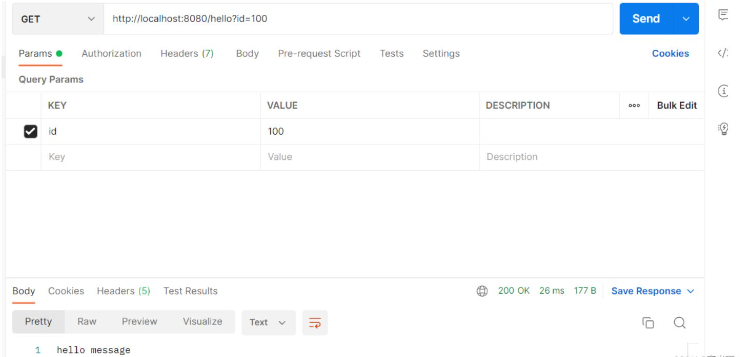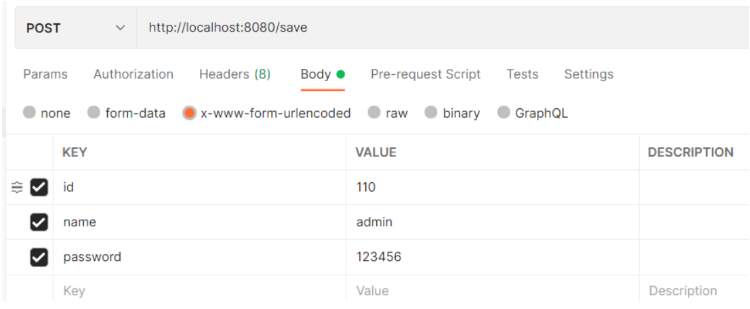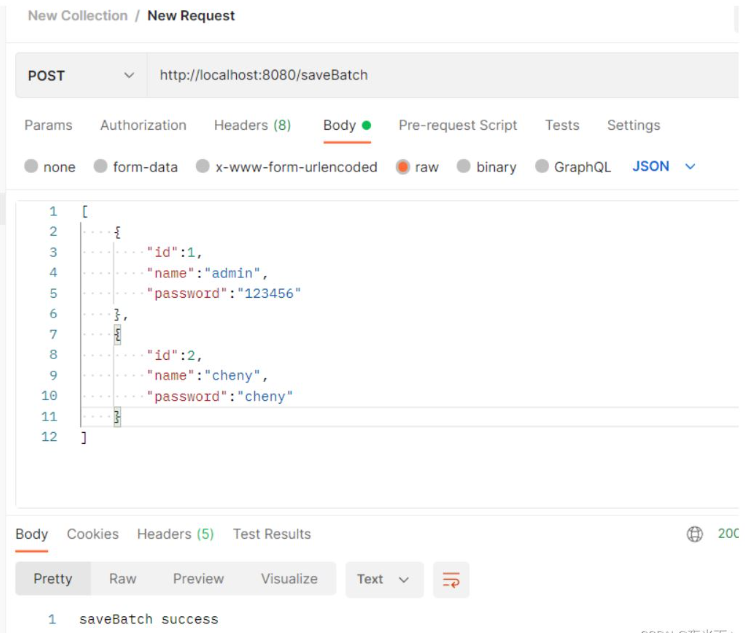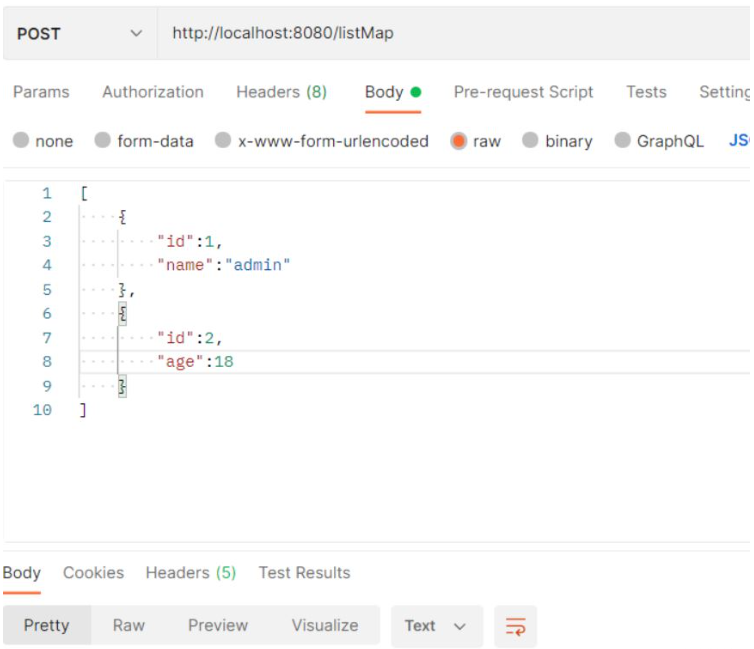жӮЁеҘҪпјҢзҷ»еҪ•еҗҺжүҚиғҪдёӢи®ўеҚ•е“ҰпјҒ
жӮЁеҘҪпјҢзҷ»еҪ•еҗҺжүҚиғҪдёӢи®ўеҚ•е“ҰпјҒ
иҝҷзҜҮж–Үз« дё»иҰҒи®Іи§ЈдәҶвҖң@RequestBodyе’Ң@RequestParamжіЁи§ЈеҰӮдҪ•дҪҝз”ЁвҖқпјҢж–Үдёӯзҡ„и®Іи§ЈеҶ…е®№з®ҖеҚ•жё…жҷ°пјҢжҳ“дәҺеӯҰд№ дёҺзҗҶи§ЈпјҢдёӢйқўиҜ·еӨ§е®¶и·ҹзқҖе°Ҹзј–зҡ„жҖқи·Ҝж…ўж…ўж·ұе…ҘпјҢдёҖиө·жқҘз ”з©¶е’ҢеӯҰд№ вҖң@RequestBodyе’Ң@RequestParamжіЁи§ЈеҰӮдҪ•дҪҝз”ЁвҖқеҗ§пјҒ
@RequestParamпјҡжҺҘ收жқҘиҮӘRequestHeaderдёӯпјҢеҚіиҜ·жұӮеӨҙгҖӮйҖҡеёёз”ЁдәҺGETиҜ·жұӮпјҢдҫӢеҰӮпјҡhttp://localhost:8080/hello/name=admin&age=18
@Target({ElementType.PARAMETER})
@Retention(RetentionPolicy.RUNTIME)
@Documented
public @interface RequestParam {
@AliasFor("name")
String value() default "";
@AliasFor("value")
String name() default "";
boolean required() default true;
String defaultValue() default "\n\t\t\n\t\t\n\ue000\ue001\ue002\n\t\t\t\t\n";
} @GetMapping("/hello")
public String hello(@RequestParam(name = "id") Long id){
System.out.println("hello " + id);
return "hello message";
}
@RequestParamз”ЁжқҘеӨ„зҗҶContent-Type дёә application/x-www-form-undencodedзј–з Ғзҡ„еҶ…е®№пјҢContent-Type й»ҳи®ӨдёәиҜҘеұһжҖ§
@RequestParamд№ҹеҸҜз”ЁдәҺе…¶е®ғзұ»еһӢзҡ„иҜ·жұӮпјҢдҫӢеҰӮпјҡPOSTгҖҒDELETEзӯүиҜ·жұӮгҖӮ
з”ұдәҺ@RequestParamжҳҜз”ЁжқҘеӨ„зҗҶ Content-Type дёә application/x-www-form-urlencoded зј–з Ғзҡ„еҶ…е®№зҡ„пјҢжүҖд»ҘеңЁpostmanдёӯпјҢиҰҒйҖүжӢ©bodyзҡ„зұ»еһӢдёә x-www-form-urlencodedпјҢиҝҷж ·еңЁheadersдёӯе°ұиҮӘеҠЁеҸҳдёәдәҶ Content-Type : application/x-www-form-urlencoded зј–з Ғж јејҸгҖӮеҰӮдёӢеӣҫжүҖзӨәпјҡ
@PostMapping("/save")
public String hello(@RequestParam(name = "id") Long id,
@RequestParam("name") String name,
@RequestParam("password") String password){
System.out.println(user);
return "hello message";
}
еҰӮжһңеүҚеҸ°дј йҖ’иҝҮжқҘзҡ„еҸӮж•°дёҚжҳҜдёүдёӘ,иҖҢжҳҜеҚҒдёӘ,еҰӮжһң继з»ӯдҪҝз”Ё @RequestParam зҡ„ж–№ејҸжқҘжҺҘ收иҜ·жұӮеҸӮж•°,е°ұйңҖиҰҒеҚҒдёӘ @RequestParam ,жҲ‘们зҡ„д»Јз ҒеҸҜиҜ»жҖ§е°ҶдјҡеҸҳеҫ—еҫҲе·®,并且еҪ“еҸӮж•°зұ»еһӢзӣёеҗҢж—¶,еҚҒеҲҶе®№жҳ“еҮәй”ҷгҖӮжүҖд»ҘдҪҝз”Ёе®һдҪ“зұ»жқҘжҺҘж”¶дј йҖ’иҝҮжқҘзҡ„еҸӮж•°пјҢдҪҶжҳҜ @RequestParam дёҚж”ҜжҢҒзӣҙжҺҘдј йҖ’е®һдҪ“зұ»зҡ„ж–№ејҸ
@Data
public class User {
@NotNull(message = "idдёҚиғҪдёәз©ә")
private Long id;
@NotBlank(message = "еҗҚеӯ—дёҚиғҪдёәз©ә")
private String name;
@NotBlank(message = "еҜҶз ҒдёҚиғҪдёәз©ә")
private String password;
}// @RequestParam дёҚж”ҜжҢҒзӣҙжҺҘдј йҖ’е®һдҪ“зұ»зҡ„ж–№ејҸпјҢжүҖд»ҘеҸҜд»ҘеңЁе®һдҪ“зұ»дёӯеҒҡж•°жҚ®ж ЎйӘҢпјҢдҪҝз”Ё @Validated жіЁи§ЈдҪҝеҫ—дҪңз”ЁеңЁе®һдҪ“зұ»еұһжҖ§дёҠзҡ„жіЁи§Јз”ҹж•Ҳ
@PostMapping("/save")
public String save(@Validated User user){
System.out.println(user);
return "hello success";
}
// console result: User(id=110, name=admin, password=123456)
еҰӮжһңж”№з”Ё json еӯ—з¬ҰдёІжқҘдј еҖјзҡ„иҜқпјҢзұ»еһӢи®ҫзҪ®дёә application/jsonпјҢзӮ№еҮ»еҸ‘йҖҒзҡ„иҜқпјҢдјҡжҠҘй”ҷпјҢеҗҺеҸ°жҺҘ收дёҚеҲ°еҖјпјҢдёә null

// console result: User(id=null, name=null, password=null)
жіЁи§Ј@RequestBodyжҺҘ收зҡ„еҸӮж•°жҳҜжқҘиҮӘrequestBodyдёӯпјҢеҚіиҜ·жұӮдҪ“гҖӮдёҖиҲ¬з”ЁдәҺеӨ„зҗҶйқһ Content-Type: application/x-www-form-urlencodedзј–з Ғж јејҸзҡ„ж•°жҚ®пјҢжҜ”еҰӮпјҡapplication/jsonгҖҒapplication/xmlзӯүзұ»еһӢзҡ„ж•°жҚ®гҖӮ
е°ұapplication/jsonзұ»еһӢзҡ„ж•°жҚ®иҖҢиЁҖпјҢдҪҝз”ЁжіЁи§Ј@RequestBodyеҸҜд»Ҙе°ҶbodyйҮҢйқўжүҖжңүзҡ„jsonж•°жҚ®дј еҲ°еҗҺз«ҜпјҢеҗҺз«ҜеҶҚиҝӣиЎҢи§ЈжһҗгҖӮ
@PostMapping("/saveBatch")
public String saveBatch(@RequestBody @Validated List<User> list){
list.forEach(System.out::println);
return "saveBatch success";
}
// console resultпјҡ // User(id=1, name=admin, password=123456) // User(id=2, name=cheny, password=cheny)
@PostMapping("/listMap")
public String saveMap(@RequestBody List<Map<String, String>> listMap){
for (Map<String, String> map : listMap) {
System.out.println(map);
}
return "listMap success";
}
// console resultпјҡ
// {id=1, name=admin}
// {id=2, age=18}ж„ҹи°ўеҗ„дҪҚзҡ„йҳ…иҜ»пјҢд»ҘдёҠе°ұжҳҜвҖң@RequestBodyе’Ң@RequestParamжіЁи§ЈеҰӮдҪ•дҪҝз”ЁвҖқзҡ„еҶ…е®№дәҶпјҢз»ҸиҝҮжң¬ж–Үзҡ„еӯҰд№ еҗҺпјҢзӣёдҝЎеӨ§е®¶еҜ№@RequestBodyе’Ң@RequestParamжіЁи§ЈеҰӮдҪ•дҪҝз”ЁиҝҷдёҖй—®йўҳжңүдәҶжӣҙж·ұеҲ»зҡ„дҪ“дјҡпјҢе…·дҪ“дҪҝз”Ёжғ…еҶөиҝҳйңҖиҰҒеӨ§е®¶е®һи·өйӘҢиҜҒгҖӮиҝҷйҮҢжҳҜдәҝйҖҹдә‘пјҢе°Ҹзј–е°ҶдёәеӨ§е®¶жҺЁйҖҒжӣҙеӨҡзӣёе…ізҹҘиҜҶзӮ№зҡ„ж–Үз« пјҢж¬ўиҝҺе…іжіЁпјҒ
е…ҚиҙЈеЈ°жҳҺпјҡжң¬з«ҷеҸ‘еёғзҡ„еҶ…е®№пјҲеӣҫзүҮгҖҒи§Ҷйў‘е’Ңж–Үеӯ—пјүд»ҘеҺҹеҲӣгҖҒиҪ¬иҪҪе’ҢеҲҶдә«дёәдё»пјҢж–Үз« и§ӮзӮ№дёҚд»ЈиЎЁжң¬зҪ‘з«ҷз«ӢеңәпјҢеҰӮжһңж¶үеҸҠдҫөжқғиҜ·иҒ”зі»з«ҷй•ҝйӮ®з®ұпјҡis@yisu.comиҝӣиЎҢдёҫжҠҘпјҢ并жҸҗдҫӣзӣёе…іиҜҒжҚ®пјҢдёҖз»ҸжҹҘе®һпјҢе°Ҷз«ӢеҲ»еҲ йҷӨж¶үе«ҢдҫөжқғеҶ…е®№гҖӮ